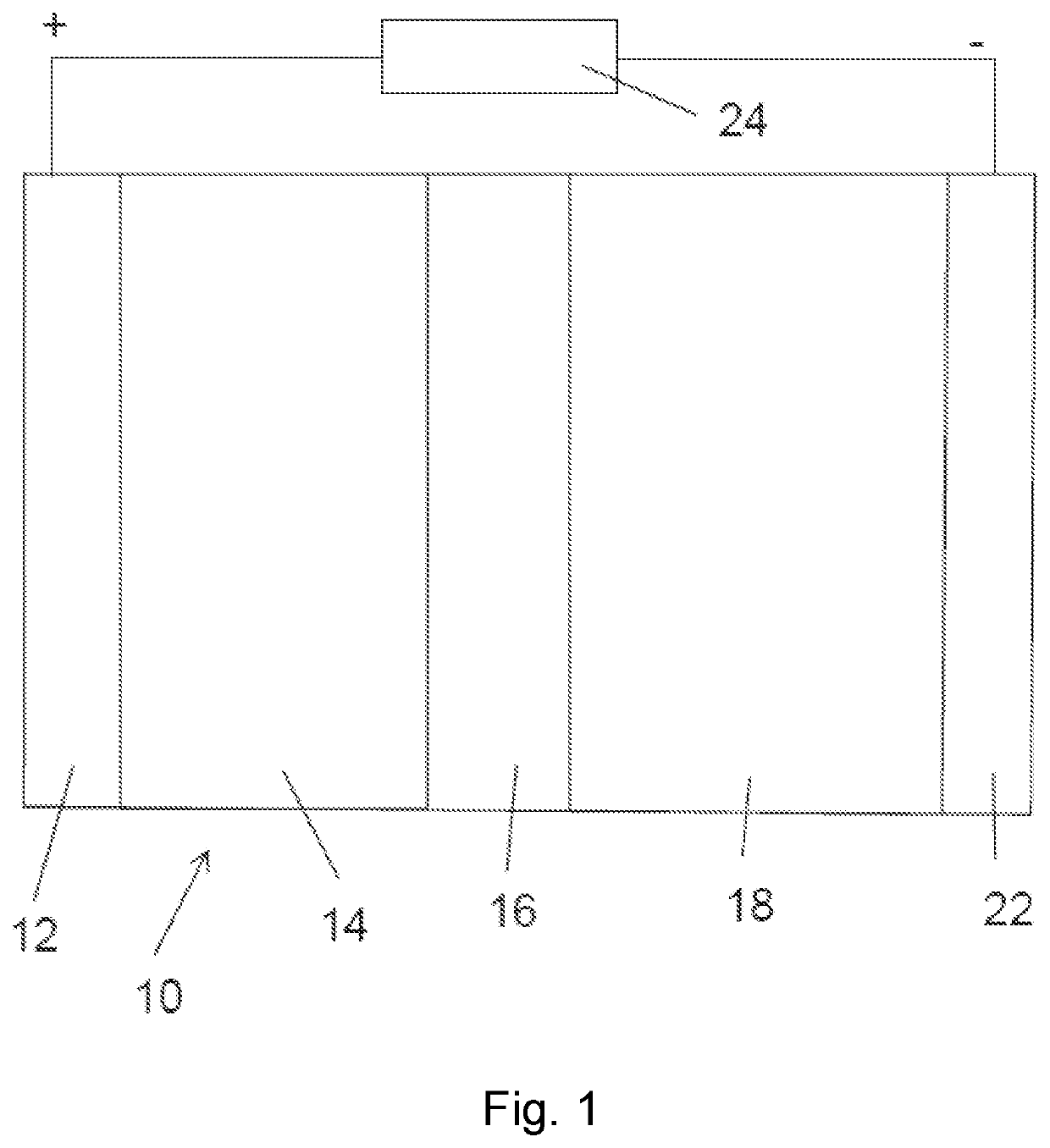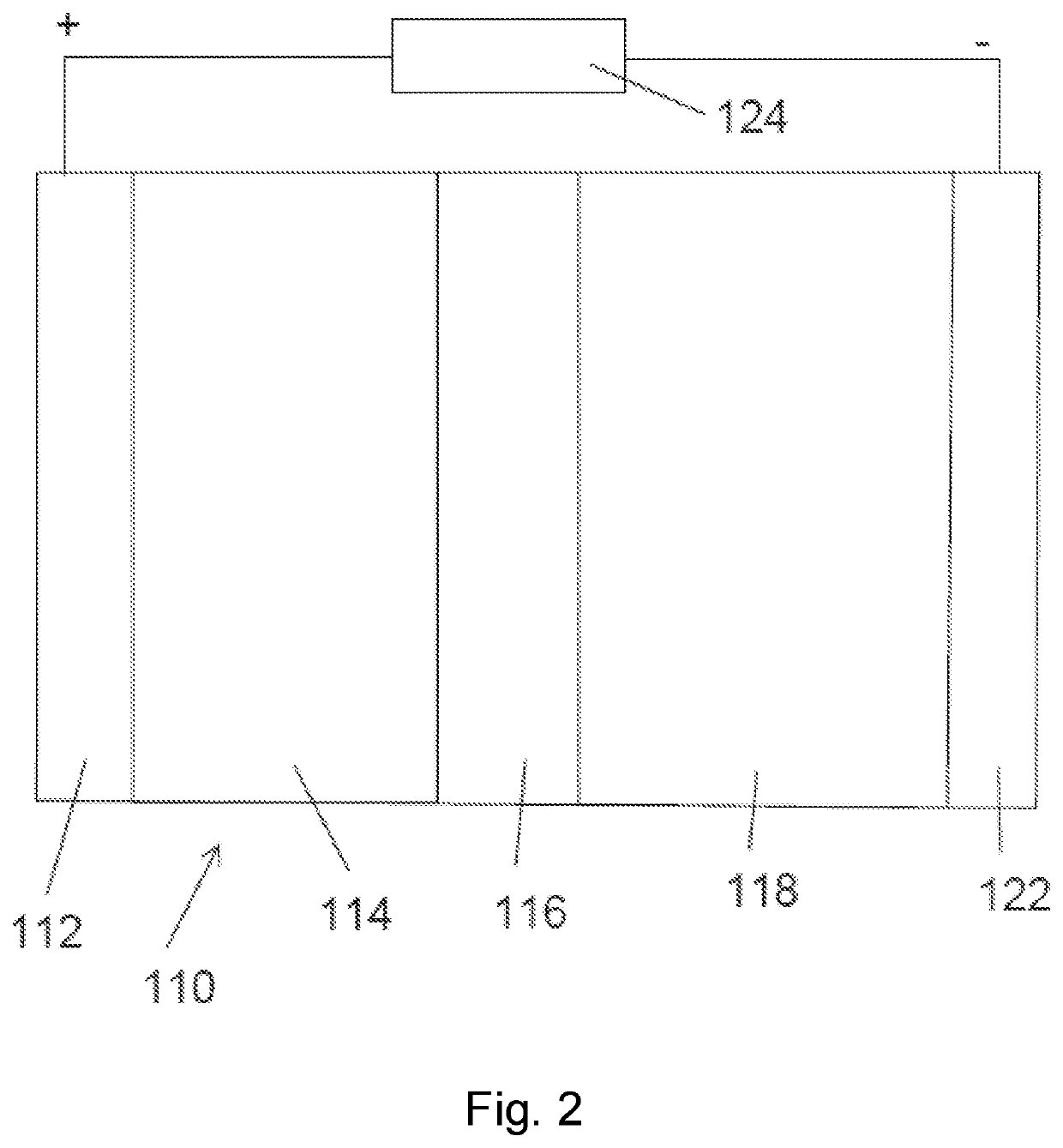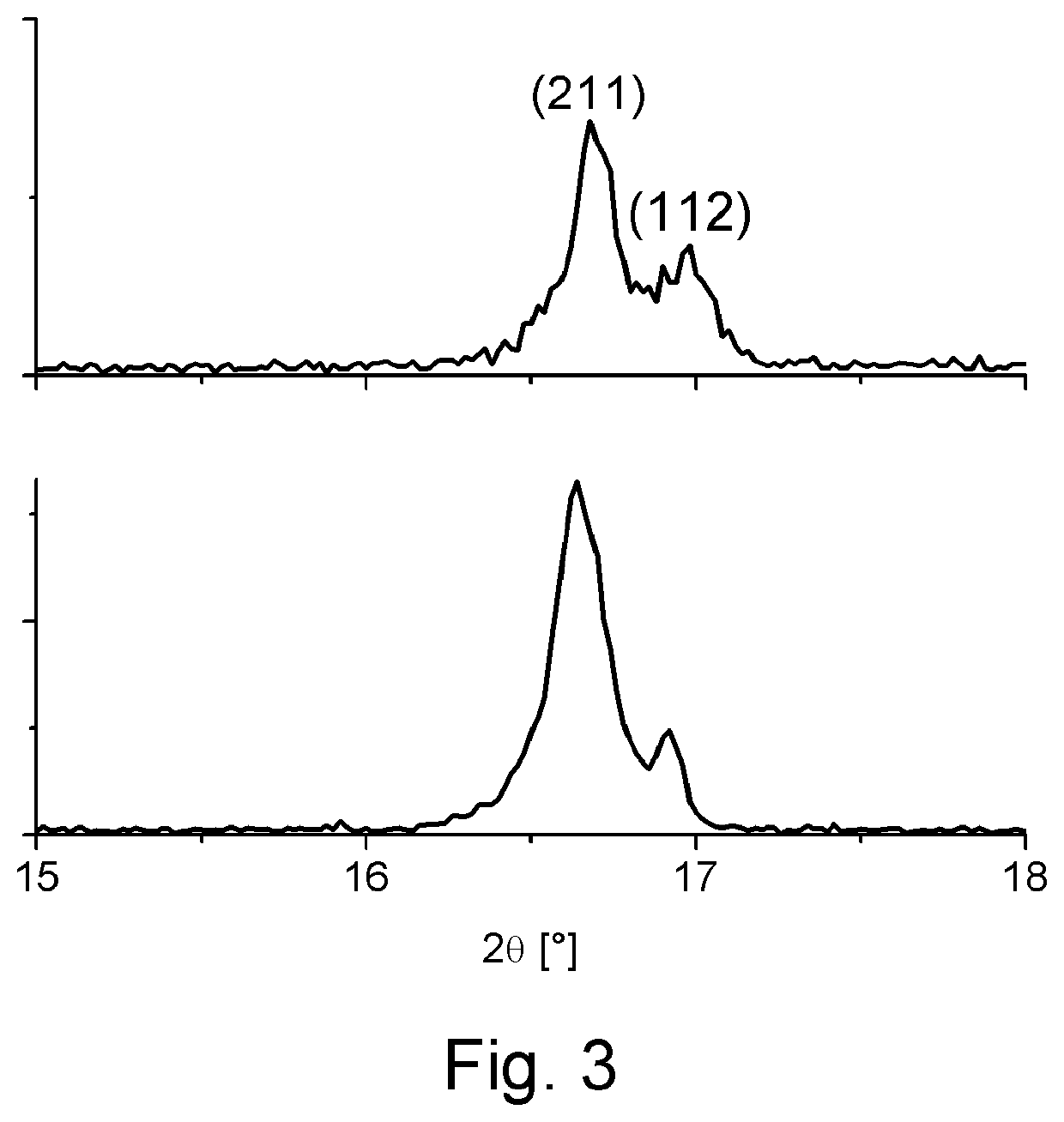Solid-State Battery Electrolyte Having Increased Stability Towards Cathode Materials
a solid-state battery and electrolyte technology, applied in the field of solid-state battery electrolyte having increased stability towards cathode materials, can solve the problems of inability to meet advanced battery concepts, flammability and flammability of liquid utilized in soa li-ion batteries, and inability to demonstrate large-scale manufacturing, etc., to achieve high ionic conductivity, low cost, and stability towards metallic lithium, and the effect of high ionic conductivity
- Summary
- Abstract
- Description
- Claims
- Application Information
AI Technical Summary
Benefits of technology
Problems solved by technology
Method used
Image
Examples
example
[0100]The following Example has been presented in order to further illustrate the invention and is not intended to limit the invention in any way.
[0101]We have shown that replacement of the Al:LLZO (LLZO doped with Al to stabilize the cubic crystal structure at room temperature) with that of pentavalently doped LLZO, such as Ta:LLZO (LLZO doped with Ta to stabilize the cubic crystal structure at room temperature) or Nb:LLZO (LLZO doped with Nb to stabilize the cubic crystal structure at room temperature) prevents reaction of the LLZO electrolyte with the cathode phase. As such, the LLZO retains the cubic-LLZO structure at room temperature which is desirable for high lithium ion conductivity. Whereas Al:LLZO is unstable during co-sintering with NMC or LCO at 700° C., Ta:LLZO or Nb:LLZO are stable with both cathodes to processing temperatures >1000° C. This innovation is key in enabling processing of LLZO based composite cathodes for all solid-state batteries.
[0102]FIG. 3 gives a plot...
PUM
| Property | Measurement | Unit |
|---|---|---|
| Temperature | aaaaa | aaaaa |
| Temperature | aaaaa | aaaaa |
| Temperature | aaaaa | aaaaa |
Abstract
Description
Claims
Application Information
 Login to View More
Login to View More - R&D
- Intellectual Property
- Life Sciences
- Materials
- Tech Scout
- Unparalleled Data Quality
- Higher Quality Content
- 60% Fewer Hallucinations
Browse by: Latest US Patents, China's latest patents, Technical Efficacy Thesaurus, Application Domain, Technology Topic, Popular Technical Reports.
© 2025 PatSnap. All rights reserved.Legal|Privacy policy|Modern Slavery Act Transparency Statement|Sitemap|About US| Contact US: help@patsnap.com



